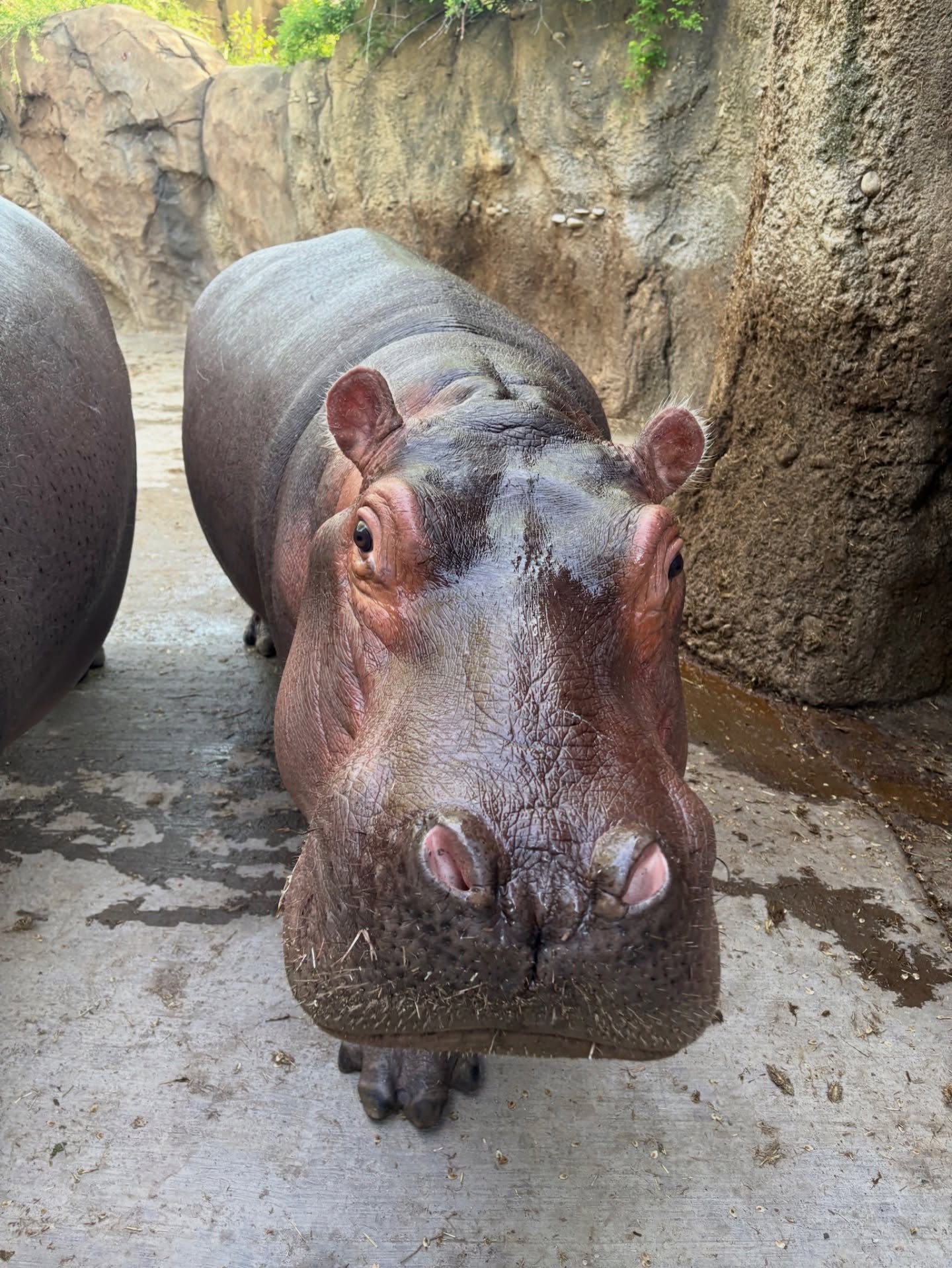- Growth and Development of Fritz: From Zoo Baby to 1500 Pounds
- Male Hippos: Size, Behavior, and Social Dynamics
- Importance of Tusks: Functionality in the Animal Kingdom
- Role of Zoos in Conservation and Education
- Human Impact and Wildlife Conservation at Zoos
Fritz, a not-so-little hippo, continues to captivate visitors even at two years old. His journey offers a glimpse into the life of a hippopotamus and the vital role zoos play in conservation and education.
Starting with Fritz’s rapid growth, male hippos are known to be significantly larger than their female counterparts. Fritz has reached an impressive 1500 pounds. This remarkable growth can be attributed to the unique biological traits of the species. Hippos are semi-aquatic mammals that spend considerable time submerged to stay cool and hydrated. Their bodies are uniquely adapted, with large, barrel-like torsos that help in buoyancy as they navigate water bodies.
Feeding is a central aspect of their growth. Hippos primarily consume grass, capable of eating up to 150 pounds a night. This diet assists in maintaining their vast size. Despite being herbivores, they have massive canines known as tusks, which play roles beyond dietary needs.
Male hippos generally grow larger, with dominant males reaching up to 3,300 pounds. This massive size has implications for their social and behavioral dynamics. Hippos are predominantly social animals, forming groups known as pods led by an alpha male. These groups are established in territories, usually bodies of water, with dominant males often defending their space vigorously.
The tusks of hippos, including Fritz, illustrate an intriguing aspect of animal anatomy. Unlike most herbivores, hippos use their tusks not for eating but for defense and combat. These tusks continuously grow, reaching lengths of up to 20 inches. They play a crucial role during mating season when males face off in battles for dominance. Understanding these behaviors provides insight into the social structure and survival strategies of hippos.
Zoos, like the one housing Fritz, operate as more than just attractions. They serve essential roles in wildlife conservation, education, and research. Zoos provide a controlled setting where experts can study hippo behaviors, growth patterns, and health. This research is pivotal in developing conservation strategies for hippos in the wild, where they face threats from habitat loss and illegal hunting.
Modern zoos are also educational hotspots, offering programs that raise awareness about wildlife and environmental conservation. Fritz serves as a living ambassador for his species, helping visitors understand the significance of preserving natural habitats and the species that depend on them.
Human impacts on wildlife, such as pollution and habitat destruction, have intensified the need for conservation initiatives, both in situ and ex situ. Zoos thus play a critical role in these efforts. By studying and breeding animals like Fritz, zoos contribute to the genetic diversity of species and can even participate in reintroduction programs.
Promoting conservation and education, zoos help instill an environmental consciousness among their visitors. They enable people to connect with wildlife in meaningful ways, fostering a sense of stewardship towards preserving our planet’s biodiversity. Fritz’s presence in the zoo symbolizes a larger commitment to wildlife conservation and the efforts needed to protect vulnerable species.
In essence, Fritz the hippo not only delights zoo visitors but embodies the broader mission of wildlife conservation and education. His life and growth offer valuable insights into the natural world, while the zoo environment showcases the collaborative efforts required to ensure the sustainability of diverse animal species.
*****
Source Description
Fritz will always be a Zoo Baby to us! This not-so-little hippo is two years old and already 1500 pounds! Male hippos are typically much larger than females. Their large tusks, which never stop growing, are not used for eating, but rather for fighting. @generalelectriccreditunion


